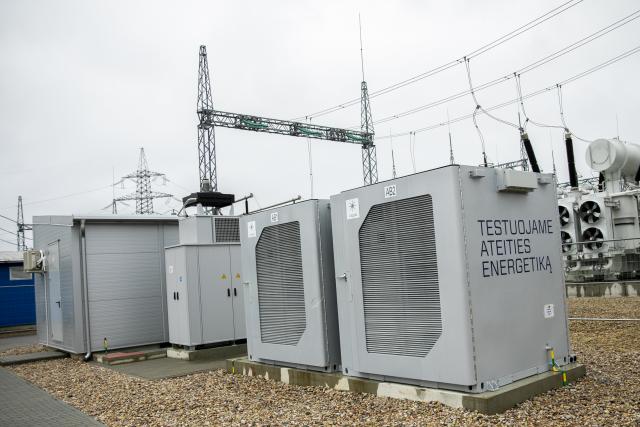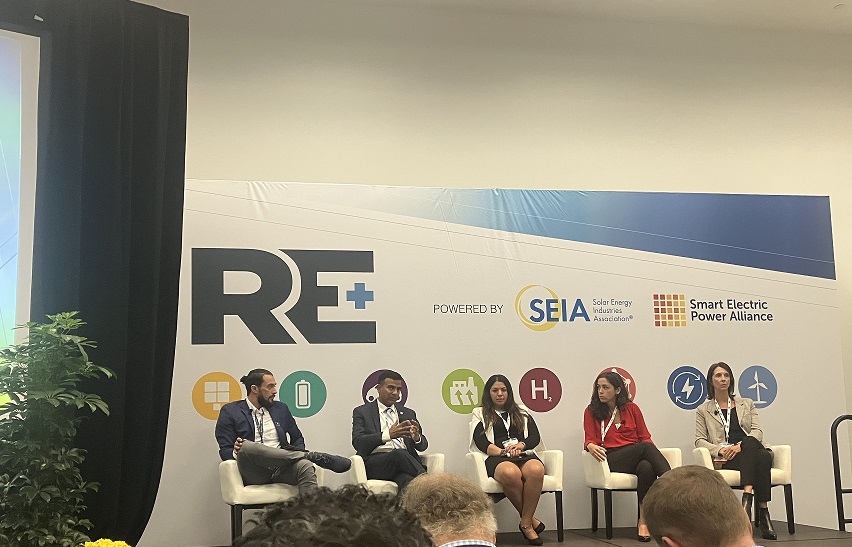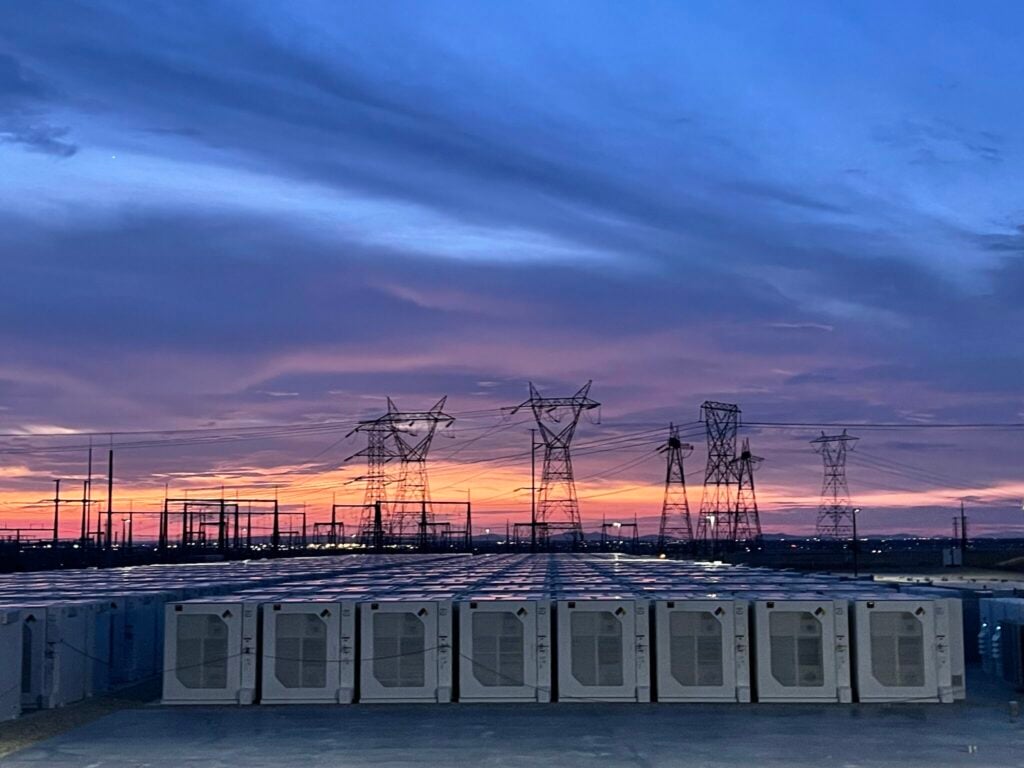
A couple of weeks ago, Energy-Storage.news met with leading figures from the energy storage industry at RE+ 2022, the trade exhibition and conference combining the Solar Power International and Energy Storage International events under one, very big roof at Anaheim Convention Center in California.
Battery storage technology provider Fluence officially launched in 2017 as a joint venture by AES Corporation and Siemens, two companies that already staked a claim to be energy storage pioneers with growing offerings and customer orders.
Enjoy 12 months of exclusive analysis
- Regular insight and analysis of the industry’s biggest developments
- In-depth interviews with the industry’s leading figures
- Annual digital subscription to the PV Tech Power journal
- Discounts on Solar Media’s portfolio of events, in-person and virtual
A lot has changed since then, not just for the company, which booked nearly 1,500MWh of customer orders in the first nine months of 2022, but for the industry as a whole.
For regular readers of this site, many of those changes will be well known. From the way lithium battery prices fell and fell for years before the rise in demand converged with pandemic-driven logistics challenges to arrest that decline, to how energy storage is finally becoming recognised around the world as an important tool in the energy transition, unlocking some – if not yet all – of its potential.
We begin our series of ‘in conversation’ articles with a chat with Kiran Kumaraswamy, Fluence’s VP of growth and head of commercial.
On the opening day of the show, we saw you speaking on a panel about long-duration energy storage (LDES). There has undoubtedly been huge interest in LDES at the show and around the industry. One of your thoughts was that LDES technologies need to be able to demonstrate qualities that go beyond, or are fundamentally different, to what lithium-ion offers.
Kiran Kumaraswamy: In general, the volatility in lithium pricing has also sparked a renewed type of interest on the non-lithium technology side, which is genuine.
But in order to be of high value in the segment, you have to figure out what type of market needs these technologies address, and there are certain use cases that actually have a lot of promise.
Like on the transmission side, using energy storage as a transmission asset, and on providing, let’s say, 24/7, or ‘around-the-clock’, renewable energy using the combination of resources, wind, solar and storage to create some type of hybrid system that can deliver full renewable energy across a whole spectrum of time.
The extreme case of that could be that you do that with time matched renewables also, so that it’s not that you’re on an average providing 24/7, but you have matching timestamps, and you’re delivering it 24/7.
The approach that long duration has to potentially take is to figure out the market application that makes the most amount of sense. It’s very likely that either the market construct or the rules are not in place for this technology to get awarded appropriately in the marketplace. But once you have a very strong view on the value proposition that you bring to the grid, with the long-duration storage, then you go figure out ways to make that happen in the marketplace.
It sounds like something Fluence is looking very closely at. How much of a limiting factor is bankability for some of these newer technologies?
Bankability is a big limiting piece, honestly. Lithium has a significant advantage in that it has a very deep supply chain, and banks that are willing to stand behind that, and so it is one of those hurdles that the alternate non-lithium technology base has to overcome.
Again, if you coalesce around what the use case is and then improve the technology out through its first few installations, that probably is a pathway towards getting there, but it is certainly a hurdle to overcome.

One source a little while ago told us that the Inflation Reduction Act (IRA) could be a boost for those alternative technologies. The IRA will introduce an investment tax credit (ITC) incentive programme for standalone energy storage, along with domestic manufacturing incentives from the IRA and other legislation like the Bipartisan Infrastructure Law. We’ll have to wait and see what the details around the ITC will be, but what are your thoughts on the IRA, which we saw you’d celebrated the passing of, at a special White House event recently?
I think it’s remarkable what we’ve achieved on the IRA itself. It’s 10 years of certainty that we’ve developed for this entire marketplace. You can see it in the posture of people at the show. People are beaming with confidence, and it’s remarkable to see. I was told that there’s 20,000 people here (the final attendance figures at RE+ turned out to be in excess of 27,000).
Getting the standalone storage investment tax credit was a massive victory for us. What you have for the first time is a decoupling of development timeframes from having to worry about only interconnection issues on the storage side.
Because previously, if you did renewables-plus-storage, you would think about development from the perspective of getting land, and getting permits, and going through interconnection in a combined fashion to avail the ITCs.
Now you have a different dynamic because you’ve decoupled the solar development pathway and storage doesn’t require as much land as solar does. The only piece that you now have to solve is this interconnection piece, which takes quite a long time, but it’s a very different dynamic to solve for.
How that actually shows up in the marketplace, we have to wait and watch over the course of the next 18 to 24 months, in terms of what dynamic that it creates. That’s one impact of IRA.
The other one is that the impact of the IRA on the target addressable market for energy storage is significant in the United States. I think that our leading analysts’ estimates say that the market for standalone energy storage is going to go up to something like 140GW [cumulative installations] by 2030. It was [forecast at] around 70GW to 75GW previously.
The market has basically doubled. That is extraordinary, it puts this market at a place that nobody ever thought it would be.
How do you think the industry will adapt to the changing dynamics of the market?
There’s going to be many, many plays oriented around how people develop their commercial go-to-market, how people develop technology pathways, how business models evolve over time, how companies take advantage of the direct pay, because they don’t need a tax equity partner for the first time.
All of those have to form in the next 18 to 24 months. People are still wrapping their head around many of the facets of what the IRAs provisions are, figuring out options on how to position themselves on each of these factors, whether it’s on the commercial go-to-market, technology side, on business models to transact, financials, all of it together.
That means that on the technology side too, companies will be looking at how to develop more domestic manufacturing, and how to source many of these materials in a manner that maximises the usage of these available ITCs.
Fluence, for instance, we have announced our manufacturing of some of the products in the US and so we’re working with a partner to actually make this happen. I think it’s going to be a very exciting time.
What sort of level of vertical integration might Fluence target with that strategy?
Some of that will be confidential information, but we are certainly looking at US manufacturing of some of the products.
Presumably some of the decisions around that will also be made a little later, once the company knows how the incentives will work for producing or using US-made content?
I think so. One other thing I learned from my trip to the White House is that the amount of time that it might take for the IRS to put out actual guidance on this topic could actually be quite significant.
They have to draft a lot of clarifications on the rules. The law is signed right now, but the intent of the law has to show up in any rules the IRS and Treasury Department actually write down.
How long that takes is anybody’s guess. In today’s market, it could take six months, it could take eight months, it could take 12 months. Nobody knows, and that’s going to have an impact on what is applicable and what’s not happening for this credit.

Fluence is obviously a global company, with projects in various markets around the world. In Europe it’s been interesting to see the 200MW/200MWh of battery storage across four separate systems the company is supplying in Lithuania take shape for transmission operator LitGrid. It’s a rare example of energy storage being used as a transmission system asset.
That’s an important project that started not long before Russia’s invasion of the Ukraine, with Lithuania and other Baltic countries aiming for greater grid synchronisation with one another and with Europe long before the war began. What is this project – and perhaps others like it – proving?
As a company, we are investing in developing product and technology capabilities in the segment on storage as a transmission asset.
Broadly, within Europe, we see that application catching a lot of traction. The interest by the transmission owning companies to utilise energy storage to add reliability, and resiliency for the system is increasing.
Think about it this way, the problem that we solve on the generation side, and the problem that we solve on the transmission side, are identical.
We build generation and transmission for the one-hour peak that happens in 8,760 hours (of the year in total). We build the church for Christmas Day: it is so large, because during Christmas Day, we want everybody to get a seat, nobody has to stand. On Christmas Day, it’s perfect, but any other day it’s too big.
Whether it’s the generation side, where you build peaking generation plants, or on the transmission side, where you build transmission lines to satisfy the peak, the problem is identical.
So, the next time you’re investing in, let’s say a US$300 million to US$500 million transmission project, people will have to ask if there was a more efficient way of solving these problems. Now, that’s not to say that you don’t need backbone transmission. There’s a lot of transmission that we need to build in all parts of the world, but we also have to consistently keep asking the question, how do we improve the utilisation of the existing transmission grid?
That’s where the use of technology like fast acting battery energy storage has huge potential.
I guess it’s fair to say any sort of transmission infrastructure investment decisions will be made on a cautious basis, and Fluence is bullish on the potential of batteries as a transmission asset. What are the limiting factors storage faces in penetrating that market opportunity?
I think the regulatory considerations are the limiting factor. This is an area where having regulations that clarify the use of storage for this application would be incredibly helpful in a market like the US.
It is a slow-moving market, in that, for example, the GridBoosters (transmission level projects in Germany for TSOs) have been in development the last two years or three years, they’re just beginning to transact right now. Chile has something similar to that too.
It’s an extraordinary value proposition, but these things take time, because they need to make their way into the national or regional transmission expansion plan and then they need to be approved by the regulatory body in those regions or in those countries, and then they need to be procured and put into service.
It’s a long cycle but I’m still super excited about it. Why? Because of the transformational power that it brings for us to add resiliency to the electric grid and use power grids more efficiently.
Being transformational requires you to do those trade-offs – you can’t achieve a transformational change without them. Transformational change is not easy.
And if I look at the US, in most parts of the US grid this application has significant potential.

